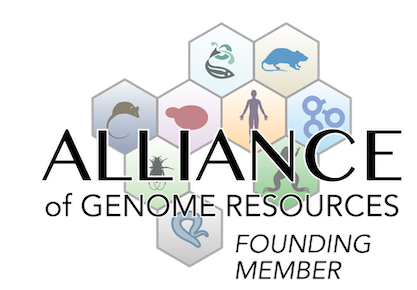mortality/aging
|
• animals surviving neonatal period either died or were euthanized between 13 and 94 days of age
• oldest survivor euthanized at 94 days of age with severe inflammation, edema, and gangrene in extremities
|
|
• only 8 double homozygotes survived neonatal lethality due to coagulopathy typical of Proctm1Fjc homozygosity
|
behavior/neurological
|
• sedentary
|
growth/size/body
|
• severe
|
respiratory system
|
• consolidation
• hemorrhage
• fibroblast infiltration of alveolar space
|
|
• degeneration of peritracheal muscle and fat
|
|
• hemorrhagic lesions
|
|
• acute and chronic inflammation
• perivascular lymph vessels are distended
|
cardiovascular system
|
• arterial neointimal formation
|
|
• myocardial degeneration
|
|
• multifocal vacuolization and necrosis
|
|
• in atria
|
|
• ventricular infarction
• atrial clotting
|
|
• significant amounts of lymphatic fluid sometimes accumulate in the thorax
|
|
• in various internal organs and leg muscles
• in bladder at E17.5
|
|
• hemorrhagic lesions
|
|
• in the brain and skull plate
• hemorrhage beneath the skull plate seen at E17.5
|
|
• hemorrhagic cysts often seen at the edges of the liver
|
|
• enlarged lymph nodes with areas of hemorrhage
|
immune system
|
• significant amounts of lymphatic fluid sometimes accumulate in the thorax
|
|
• enlarged lymph nodes with areas of hemorrhage
|
|
• hypersegmentation
|
|
• areas of atrophy and edema
|
|
• with areas of hemorrhage
|
|
• acute and chronic inflammation
• perivascular lymph vessels are distended
|
hematopoietic system
anisocytosis
(
J:67398
)
|
• Howell-Jolly bodies sometimes seen
|
|
• hypersegmentation
|
homeostasis/metabolism
|
• near truncus pulmonalis
• occasionally see significant thrombi in the larger blood vessels
• intravascular thrombosis in liver
|
liver/biliary system
|
• hemorrhagic cysts often seen at the edges of the liver
|
|
• areas of hyperplasia, mineralization and hemorrhage
|
|
• seen to varying degrees at E17.5
|
|
• fibrotic tissue often seen on edges of the liver
|
nervous system
|
• in the brain and skull plate
• hemorrhage beneath the skull plate seen at E17.5
|
muscle
|
• myocardial degeneration
|
|
• multifocal vacuolization and necrosis
|
cellular
|
• gangrene seen in the extremities (nose, tail and paws) of oldest survivor euthanized at 94 days of age with severe inflammation and edema
|



 Analysis Tools
Analysis Tools